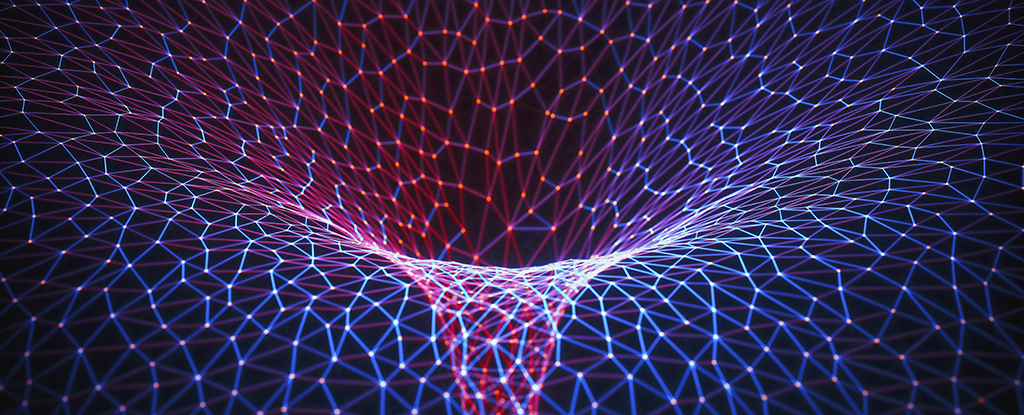Products You May Like
Transferring information from one location to another without transmitting any particles or energy seems to run counter to everything we’ve learned in the history of physics.
Yet there is some solid reasoning that this ‘counterfactual communication‘ might not only be plausible, but depending on how it works could reveal fundamental aspects of reality that have so far been hidden from view.
Counterfactual physics isn’t a new thing in itself, describing a way of deducing activity by an absence of something. In one sense, it’s pretty straight forward. If your dog barks at strangers, and you hear silence when the front door opens, you’ve received information that says a familiar person has entered your house in spite of the absence of sound.
Yet there in recent years, the question of a quantum version of this form of transfer has arisen, with physicists exploring the possibility of quantum information being carried without a particle being exchanged.
The concept isn’t merely theoretical. Ghost imaging uses a separated pair of engtangled photons to deduce information about an object without it absorbing and transmitting either of the particles.
One leading researcher in the field has proposed an experimental blueprint for testing the physics behind a kind of exchange-free communication, a method which he calls counterportation.
As you might expect given the nature of the physics involved, quantum computing plays a part. The proposal uses qubits – the probability-based versions of classical binary carriers of information – to transfer information from one location to another without ever interacting.
Salih’s prior research involves light being separated through complex arrays of splitters and detectors, demonstrating a non-intuitive outcome of information arriving at a destination in spite of there being no particle to carry it.
What the physicist is proposing is a new computing scheme based on his previous theoretical protocol published in 2013.
“While counterportation achieves the end goal of teleportation, namely disembodied transport, it remarkably does so without any detectable information carriers traveling across,” says physicist Hatim Salih, from the University of Bristol in the UK.
“If counterportation is to be realized, an entirely new type of quantum computer has to be built: an exchange-free one, where communicating parties exchange no particles.”
Teleportation is a well established means of transferring a quantum state from one place to another. Though the details are complex, it involves entangling several objects and then separating them an arbitrary distance, before gently measuring the entangled objects in one location in a very particular way. Only once the separated object is also measured against the findings, communicated via old fashioned methods, is the act of teleportation realized.
The end result isn’t the transfer of a solid object, as such, but rather a very specific quantum state. Completing the measurements on the original object effectively destroys it, meaning that state has effectively jumped from one place to another.
Counterportation is a quantum form of counterfactual communication that results in the transfer of quantum information, much like teleportation (only without the added bother).
The obvious question is how. This is where a particular kind of Einstein–Rosen (ER) bridge or wormhole comes in, one hypothesized to represent the overlap or connection between entangled objects.
According to Salih, this kind of local wormhole could act as the medium through which counterportation happens.
While wormholes have been theorized about in terms of black holes, it’s possible that they describe entangled phenomena on smaller scales too. If wormholes do indeed exist, their description could help fill in gaps in our knowledge on the fundamental nature of matter.
“The goal in the near future is to physically build such a wormhole in the lab, which can then be used as a testbed for rival physical theories, even ones of quantum gravity,” says Salih.
“Our hope is to ultimately provide remote access to local wormholes for physicists, physics hobbyists, and enthusiasts to explore fundamental questions about the Universe, including the existence of higher dimensions.”
We should note that this is all theoretical for now – and based on foundations that not all scientists agree on – but it adds another layer of intrigue to the scientific discussion going on about quantum counterfactual communication and its potential role in research.
“This is a milestone we have been working towards for a bunch of years,” says Salih. “It provides a theoretical as well as practical framework for exploring afresh enduring puzzles about the Universe, such as the true nature of space-time.”
The research has been published in Quantum Science and Technology.
